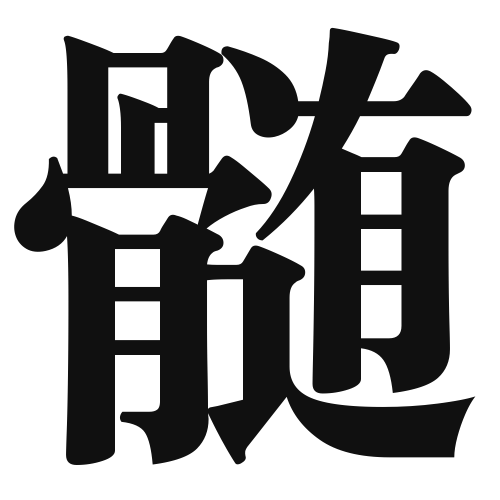1. Overview of Meaning
The kanji “髄” (zui) refers to “marrow,” which is the soft tissue found in the center of bones. It is often associated with the essence or core of something, symbolizing vitality and life force.
2. Formation and Radical
Formation of the Kanji: The kanji “髄” is a phono-semantic compound (形声文字), which means it combines a semantic component (meaning) and a phonetic component (sound). The left part “髟” relates to hair, while the right part “隹” suggests a sound or pronunciation.
Radical: The radical of “髄” is “髟,” which is associated with hair or fur, indicating a connection to living beings and their essence.
3. Examples of Usage
Common Words and Phrases: Some frequently used words that include “髄” are:
- 骨髄 (こつずい, kotsuzui) – bone marrow
- 髄液 (ずいえき, zuieki) – cerebrospinal fluid
Example Sentences in Daily Conversation:
- 彼は骨髄移植を受けることになった。 (かれはこつずい いしょくをうけることになった。) – He is going to receive a bone marrow transplant.
- 髄液は脳を保護する役割を果たしている。 (ずいえきはのうをほごするやくわりをはたしている。) – Cerebrospinal fluid plays a role in protecting the brain.
4. Synonyms and Antonyms
Similar Kanji: A similar kanji is “核” (かく, kaku), which means “nucleus” or “core.” While both refer to the essence of something, “髄” specifically relates to the marrow or vital essence, whereas “核” can refer to the central part of an atom or a concept.
Antonyms: An antonym could be “表面” (ひょうめん, hyoumen), meaning “surface.” While “髄” refers to the inner essence, “表面” denotes the outer layer or appearance.
5. Cultural and Historical Background
Connection to Japanese Culture: In Japanese culture, “髄” is often associated with life and vitality, reflecting the importance of health and well-being. The concept of marrow is also linked to traditional medicine and the understanding of the body’s inner workings.
Proverbs and Idioms: There are expressions that highlight the significance of the essence of life, such as “命の髄を吸う” (いのちのずいをすう, inochi no zui wo suu), which means “to draw the marrow of life,” emphasizing the importance of living life to the fullest.
